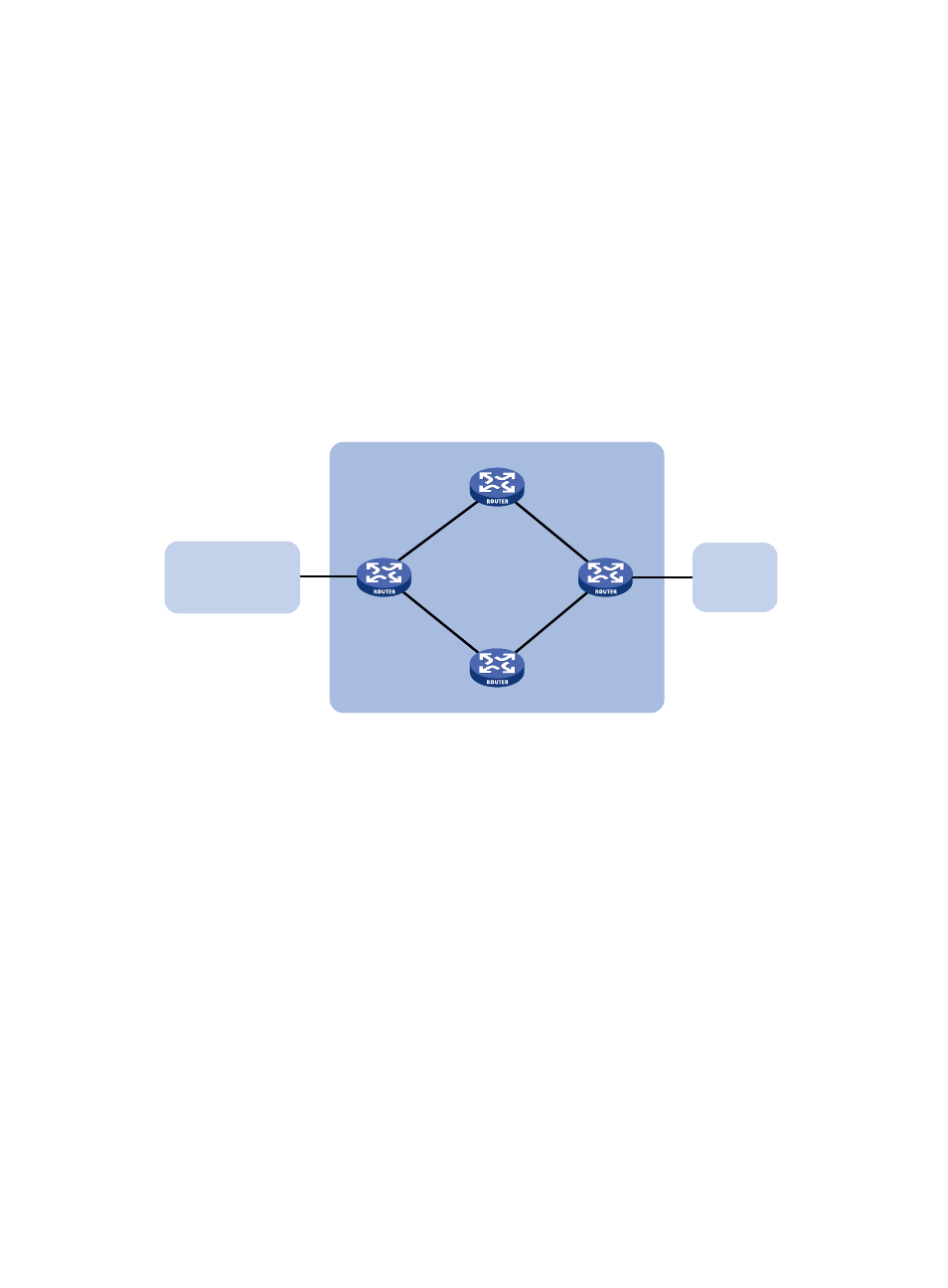Configuring bfd for ipv6 bgp, Network requirements, Configuration procedure – H3C Technologies H3C SR8800 User Manual
Page 396

380
The output shows that both IBGP and EBGP neighbor relationships have been established, and all
protocol packets are protected by IPsec.
Configuring BFD for IPv6 BGP
Network requirements
As shown in
•
Configure OSPFv3 as the IGP in AS 200.
•
Establish two IBGP connections between Router A and Router C. When both links are working,
Router C adopts the link Router A<—>Router B<—>Router C to exchange packets with network
1200::0/64. Configure BFD over the link. Then if the link fails, BFD can quickly detect the failure
and notify it to IPv6 BGP. Then the link Router A<—>Router D<—>Router C takes effect
immediately.
Figure 122 Network diagram
Configuration procedure
1.
Configure IP addresses for interfaces: (Details not shown)
2.
Configure OSPFv3 to make sure that Router A and Router C are reachable to each other. (Details
not shown)
3.
Configure IPv6 BGP on Router A:
# Establish two IBGP connections between Router A and Router C.
<RouterA> system-view
[RouterA] bgp 200
[RouterA-bgp] ipv6-family
[RouterA-bgp-af-ipv6] peer 3002::2 as-number 200
[RouterA-bgp-af-ipv6] peer 2002::2 as-number 200
[RouterA-bgp-af-ipv6] quit
# When the two links between Router A and Router C are both up, Router C adopts the link Router
A<—>Router B<—>Router C to exchange packets with network 1200::0/64. (Set a higher MED
value for route 1200::0/64 sent to peer 2002::2 on Router A.)
{
Create IPv6 ACL 2000 to permit 1200::0/64 to pass.
[RouterA] acl ipv6 number 2000
[RouterA-acl6-basic-2000] rule permit source 1200::0 64
2001::1/ 64
2002::2/ 64
Router A
Router C
AS 200
Router D
2001::2/64
2002::1/ 64
GE3/1/2
3001::1/64
3001::2/64
3002::1/64
3002::2/64
Router B
AS 100
AS 300
1200::0/ 64
GE3/1/1
GE3/1/2
GE3/1/1
GE3/1/1
GE3/1/2
GE3/1/1
GE3/1/2